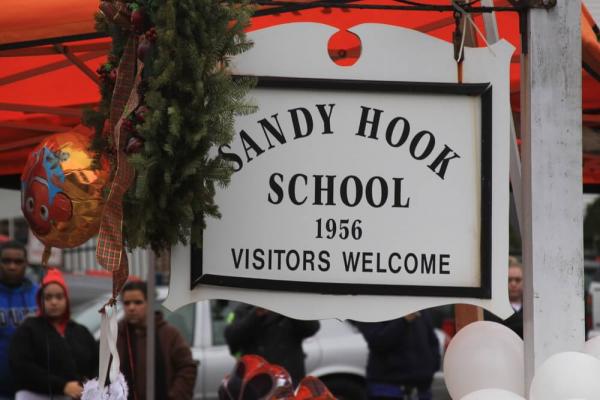In John’s Gospel, the air of grief is all around. The family has returned home to a place that looks the same but is empty, because their loved one is gone. People are gathered around to grieve, support, console, and to say kaddish. Into this scene, Jesus walks.
But not early enough to stop the death that has happened. Not early enough to be with those he loved as they died. One of those whom Jesus was closest to has died and is in the tomb, and he wasn’t around to prevent it. The family is in pain, and they are angry.
In this text we are invited to stand with Martha and others in her position, a little way off from the tomb, and give voice to our anger and our pain, and in our exhaustion wonder, “If God was there, why did this happen?”
This week, on April 3, we are being invited again to stand at the face of the tomb. Independent Lens/PBS is showing the documentary Newtown, about the 2012 shooting of 20 first graders, and six teachers and staff from Sandy Hook Elementary School, in Newtown, Conn.
It would be much easier to let the face of the tomb be a scriptural story, so we could talk about terror and grief at arm’s length. But if we strip the story of humanity, we have no recourse but to fall into Christian platitudes that have no resilience in the face of real pain and grief.
Although a long way away from the small town of first century Bethany, the grief on the faces and in the bones of parents and community of Newtown, is as sacred as Martha and Mary’s. The plea “please, Jesus,” whispered into a 911 call, is no less a call for the divine than the words of Martha. Newtown takes us closer to the cross, when innocents are murdered by government-sanctioned weapons of violence.
And into this Jesus walks and weeps. The shortest verse in the Bible, and one of the most significant, “Jesus wept.” (John 11:35) The God who speaks the words of light and life, of hope and consolation, of resurrection and life, is the God who grieves with us. Here we see that Christianity is not a place of avoiding pain, but an invitation into the heart of God who bears the reality of our humanity, our pain and our ability to inflict it.
We know that Lazarus does rise from the dead. And yet we are called also into a deeper level of the story, in that it is exactly this action of Jesus, the raising of Lazarus, that seals Jesus’ fate. The Gospel says, recounting the conversation of the Pharisees, who fear that their holy places and their nation will be destroyed by the Romans, "so from that day on they planned to put him to death." (John 11:53)
The one who comes into our midst to grieve with us, is the one who walks the way of the cross, the God who faces into the horror, the injustice, the evil in us, who goes to bring light and peace there also. The God who walks the way of the darkness of death, that the dead might see the light beyond.
And yet this is also the God who does not offer us easy answers or lets us do the same to each other. So that when we face into the reality, our own grief or that of others around us, whether we see it close up or via the media, we are forced to ask, “How can we face all this, without letting it kill us too?”
I suspect the answer may be both comforting and disturbing. It will probably be different for all of us. The usual answer would be Jesus. But in the faces of the devastated parents of Newtown, the grieving parents of Trayvon and Tamir, and others like them, the usual answers don’t work as well. We know that God and God’s near failing love is with us, but somehow, like Martha facing Jesus, we know that we are in a different place than the one looking back at us.
I think perhaps, during Lent, someone who can show us the way forward is Lazarus. I find myself wondering about the relationship between Lazarus and Jesus before the crucifixion. Lazarus, the one who has been raised, the one who knows the journey that Jesus must take. It is the ones who have faced death and know the reality of the light beyond that can give us the strength to keep going.
Via ON Scripture.
Got something to say about what you're reading? We value your feedback!

